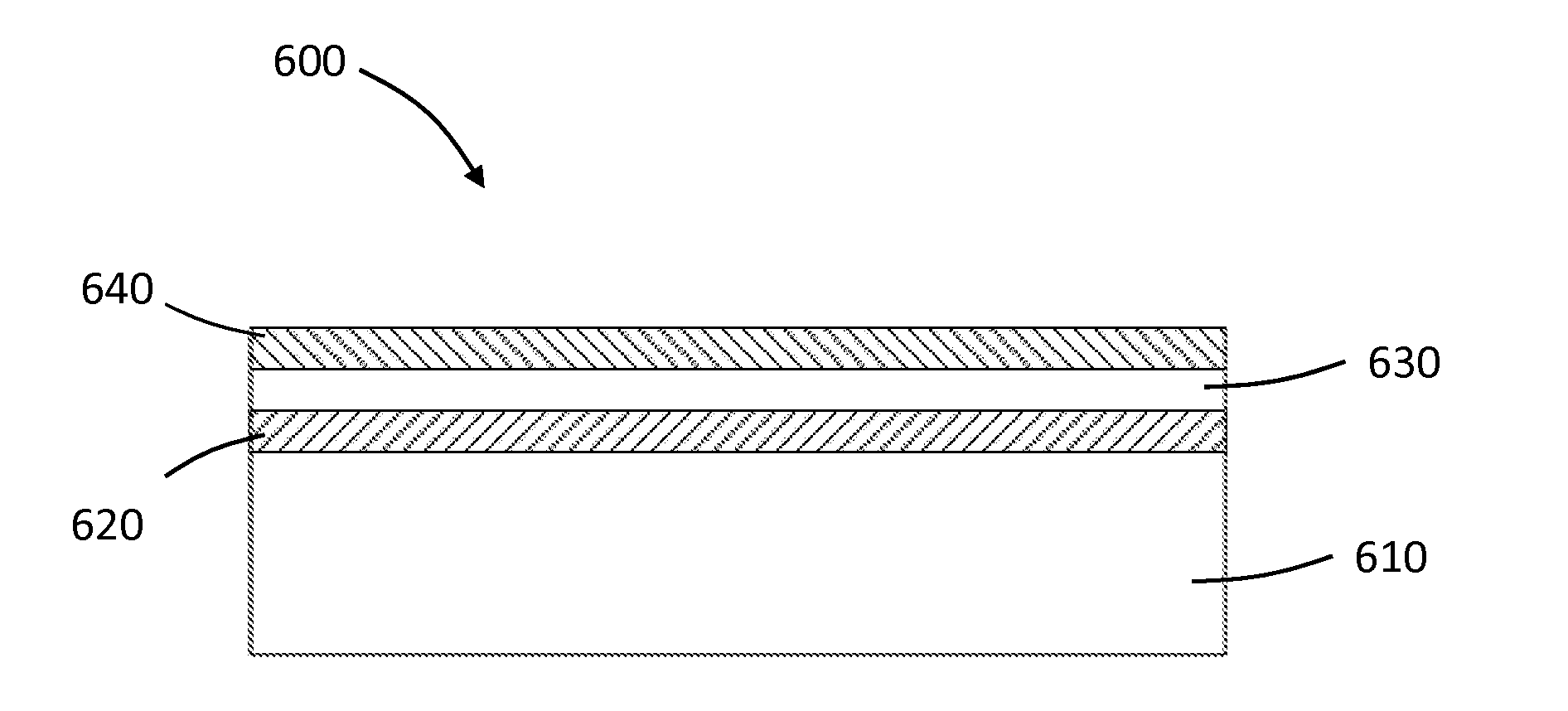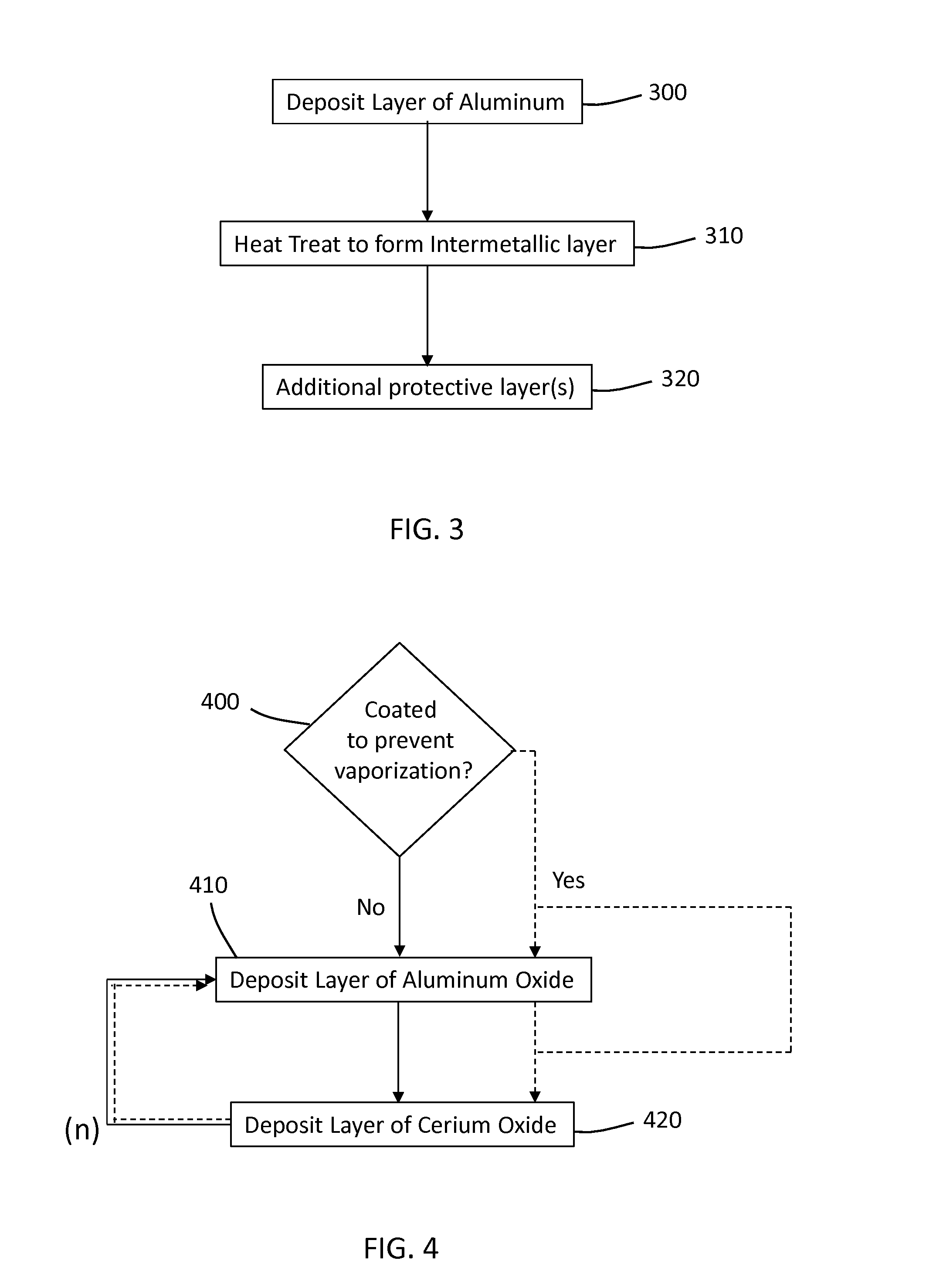Protected Magnesium Alloys for Bioresorbable Stents
a bioresorbable stent and magnesium alloy technology, applied in the field of implantable devices, can solve the problems of bare mg alloy degradation too quickly, difficult to develop effective mg alloy modification or protection regimen, etc., and achieve the effect of uniform corrosion
- Summary
- Abstract
- Description
- Claims
- Application Information
AI Technical Summary
Benefits of technology
Problems solved by technology
Method used
Image
Examples
example 1
Combination of HF Conversion Coating and Nanolaminate
[0134]AE42 Mg alloy stents were immersed in a 49% HF solution for a 24 hour immersion time at ambient conditions to conversion coat the Mg alloy with hydrous MgF2 having a thickness of about one to two microns. The resultant film was uniform and dark in appearance. Compare FIG. 11A, which is an image of a bare electropolished Mg alloy stent, to FIG. 11B, which is an image of an electropolished Mg alloy stent post HF treatment. The treatment resulted in the removal of precipitants and defects on the surface of the stent, which was shown to cause more uniform corrosion.
[0135]An aluminum oxide coating or a coating of a nanolaminate of aluminum oxide and alucone was applied to HF conversion coated AE42 Mg alloy stents, thermal oxide treated AE42 Mg alloy stents, and bare AE42 Mg alloy stents.
[0136]Thermal oxidation of AE42 Mg alloy stents was carried out as follows. Briefly, the Mg alloy stents were heated at 485° C. for 6 hours in an...
example 2
Aluminum Oxide and Cerium Oxide Coated Magnesium Alloy Stents
[0148]Bare Mg alloy (AE42) and aluminum oxide coated Mg alloy (AE42 with 100 nm of aluminum oxide deposited by ALD at 95° C.) samples were subjected to in vitro corrosion testing, generally as described above regarding Example 1. The percent metal remaining in such stents after 2 weeks and 4 weeks of corrosion testing are shown in FIG. 18. As shown, atomic layer deposition (ALD) of aluminum oxide (Al2O3) on magnesium alloy can be an effective way to slow corrosion (FIG. 18). However, when placed on a stent that is crimped and deployed and subjected to fatigue in vivo, aluminum oxide coatings may not sufficiently slow corrosion of the Mg alloy to allow effective stent function for a desired amount of time. See, for example, FIG. 12 and associated discussion above in Example 1.
[0149]Cerium has also been shown in a variety of literature to act as a corrosion inhibitor for magnesium alloys. However, cerium nitrate conversion c...
PUM
| Property | Measurement | Unit |
|---|---|---|
| Temperature | aaaaa | aaaaa |
| Temperature | aaaaa | aaaaa |
| Temperature | aaaaa | aaaaa |
Abstract
Description
Claims
Application Information
 Login to View More
Login to View More - R&D
- Intellectual Property
- Life Sciences
- Materials
- Tech Scout
- Unparalleled Data Quality
- Higher Quality Content
- 60% Fewer Hallucinations
Browse by: Latest US Patents, China's latest patents, Technical Efficacy Thesaurus, Application Domain, Technology Topic, Popular Technical Reports.
© 2025 PatSnap. All rights reserved.Legal|Privacy policy|Modern Slavery Act Transparency Statement|Sitemap|About US| Contact US: help@patsnap.com



